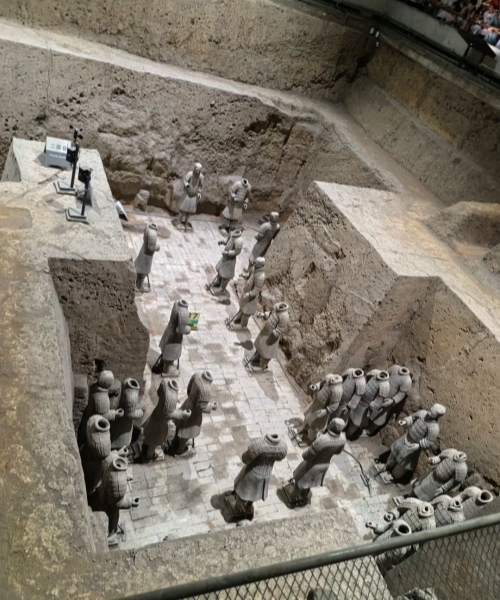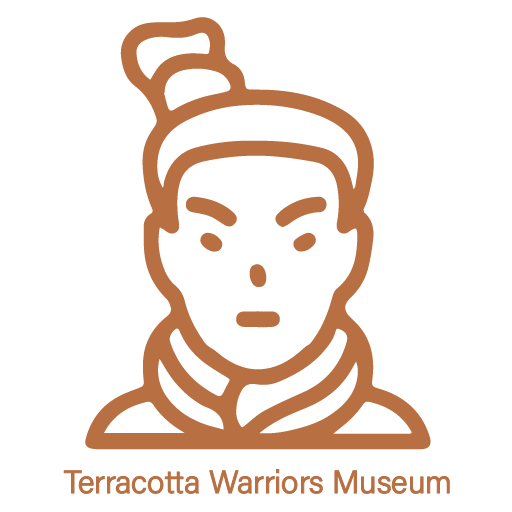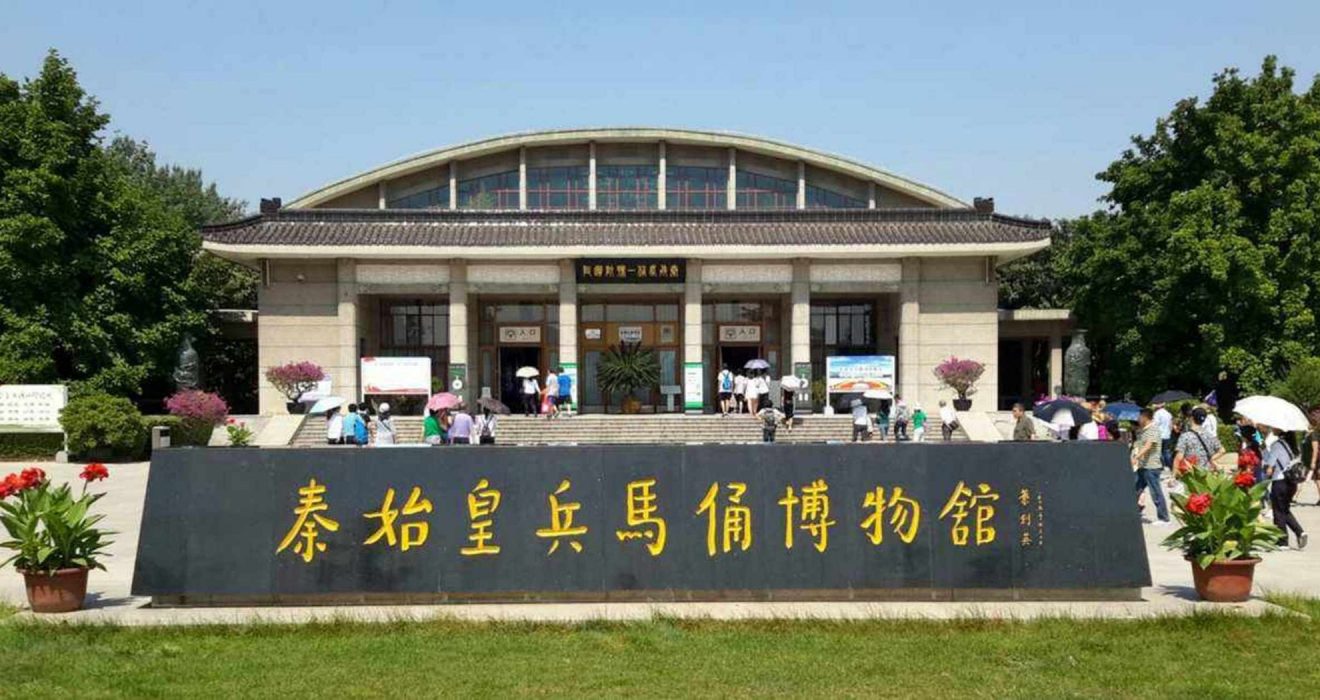How Big is Terracotta Warriors Museum?
The Terracotta Warriors Museum of Emperor Qin Shi Huang has now expanded to 46.1 hectares, that is, 461,000 square meters. It consists of two main components: the Terracotta Warriors Museum and the Site Park of Emperor Qin Shi Huang’s Mausoleum, also known as Lishan Garden. Below is an overview of the area for each section.

Pit 1 at Terracotta Warriors Museum
Pit 1 is the largest of the three pits and features the main battle formation with chariots and infantry arranged alternately. It measures 230 meters in length and 62 meters in width, covering a total area of 14,260 square meters.
The depth ranges from 4.5 to 6.5 meters below the original ground surface. Inside, there are ten ramming partition walls, each 2.5 meters wide, creating a layout with nine bays running from south to north, all surrounded by corridors.
Based on the density of the unearthed terracotta warriors, it is estimated that over 6,000 warriors and horses are buried in Pit 1.

Pit 2 at Terracotta Warriors Museum
Pit 2 is shaped like a carpenter’s square and is located northeast of Pit 1 and east of Pit 3. It measures 96 meters long from east to west and 84 meters wide from north to south, covering an area of approximately 6,000 square meters.
The internal structure of Pit 2 resembles that of Pit 1, but the battle formations are more intricate, showcasing a wider variety of troops. This pit features the most impressive military arrangement among the three pits, consisting of four units that include a mix of chariots, cavalry, and crossbowmen arranged in square formations.

Pit 3 at Terracotta Warriors Museum
Pit 3 is the smallest of the burial pits, featuring a concave shape. It measures 17.6 meters wide from east to west and 21.4 meters long from north to south, covering an area of 524 square meters. This is just 3.6% of Pit 1’s area and 6.7% of Pit 2’s area. Located north of the western end of Pit 1, it is positioned 25 meters south of Pit 1 and 120 meters east of Pit 2.
Pit 3 consists of north and south side rooms along with a stable, which houses a four-horse chariot and four terracotta warriors and horses. In total, 68 terracotta figures have been unearthed here. Experts believe that Pit No. 3 served as the command post for the legions in Pits 1 and Pit 2.
Cultural Relics Exhibition Hall
The Cultural Relics Exhibition Hall has a total construction area of 7,200 square meters, with an exhibition space of 4,500 square meters.
The Site Park of Emperor Qinshihuang’s Mausoleum (Lishan Garden)
The entire area of the Site Park of Emperor Qinshihuang’s Mausoleum covers over 50 square kilometers. Within this park, the cultural relic-intensive zone occupies approximately 2.13 square kilometers.


